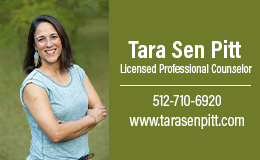New Parents: The Wrong Advice About Infant Sleep Could Be Deadly
Even after the successful “Back to Sleep” campaign decades ago, about 3,500 babies still die each year from sleep-related deaths in the United States. To help reduce these infant deaths, the American Academy of Pediatrics (AAP) recently updated their policy recommendations and new laws have been passed banning hazardous infant sleep-related products.
Although most people have heard about safe sleep principles for infants, many ignore expert recommendations. Instead, they rely on advice from family and friends as well as postings on social media. Greater education on safe sleep practices that are scientifically based will help save lives. Share the latest safe sleep information below with everyone involved in your baby’s care.
Avoid Soft Surfaces and Inclined Sleepers
You probably already know that the sleep surface for babies should be flat and firm. But did you know that inclined sleepers and bumper pads are dangerous? Under the Safe Sleep for Babies Act of 2021 it is “unlawful to manufacture, sell, or distribute crib bumpers or inclined sleepers for infants.” When a baby sleeps on an incline of more than 10 degrees, the chin can fall down to the chest and restrict the airway. The baby may also roll out of the device and get trapped under it. About 73 deaths and over 1,000 incidents related to infant inclined sleep products have been reported to the Consumer Product Safety Commission (CPSC). AAP cautions that when your baby falls asleep in a sitting device, such as a swing, stroller, or carrier, move him or her to an approved flat surface as soon as you can.
Soft sleep surfaces pose a danger to babies. Bumper pads can interfere with breathing if the baby’s face gets too close. In the past, parents used bumper pads to keep the baby’s head from getting wedged between crib slats. This is no longer a worry because manufacturers build crib slats closer together.
Understand the Risks of Bed or Surface Sharing
The AAP “does not support bed-sharing under any circumstances.” The AAP policy statement reports that the risks of sleep-related deaths compared to baseline are more than 10 times higher if bedsharing:
- With someone impaired by fatigue, alcohol, illegal drugs or sedating medicines
- With a current smoker or if the mother smoked during pregnancy
- On a soft surface like a sofa, armchair or mattress
Take these Steps to Protect
Your Baby
According to the American Academy of Pediatrics, here are some other things that you can do to help keep your baby safe during sleep:
- Place your baby on the back to sleep. This is the safest position, even if the child spits up. Never prop a baby on their side with a rolled-up blanket or place the baby face down.
- Provide supervised tummy time. Work up to 15 to 30 minutes every day by the time the baby is seven weeks old.
- Breastfeed your baby. Babies who are breastfed or who receive breast milk have a lower risk of sleep-related death. The longer you breastfeed, the greater the risk reduction.
- Put the baby to sleep in the parents’ room. For at least the first six months, the baby should sleep on their own separate, approved surface that is placed close to the parents’ bed. This has been shown to reduce the risk of sudden infant death syndrome by as much as 50%.
- Offer a pacifier for naps and bedtime. Once breastfeeding is established, offer a pacifier for sleep times. This has been shown to have a protective effect. You don’t need to put the pacifier back in the baby’s mouth if it falls out during sleep. Also, don’t put a pacifier on a string around the baby’s neck or attach it to a stuffed toy.
- Keep the baby away from smoke. The baby’s environment should be smoke free. Don’t smoke or allow anyone else to smoke around your baby.
- Don’t dress the baby too warmly. Consider the temperature when you dress the baby. A general rule is no more than one layer more than an adult would wear to feel comfortable. Don’t put a hat on your baby indoors. Watch for signs of overheating like sweating.
- Don’t use home cardiorespiratory monitors. They have not been proven to reduce sleep-related deaths and may make parents complacent about following safe sleep practices.
Brenda Schoolfield is a medical writer and editor who lives in Austin. Sugar, her cocker spaniel and sometimes a rescue foster dog or two keep her company while she writes.

















